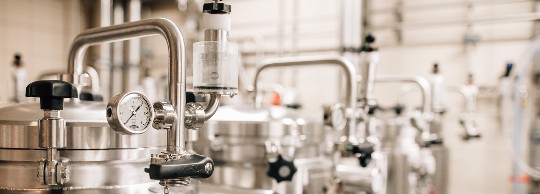What Double Dry Hopping means in technical terms has not been defined by the brewing community: A double dose or two doses of dry hopping? A larger quantity or two process steps? Beer sommelier Sylvia Kopp and Brewing Solutions Team Manager Christina Schönberger explain the DDH.
Double Dry Hopping in the beer world
It’s only recently that the letters DDH began to circulate in the beer world. They spilled over into the increasingly cryptic beer descriptions with the wave of NEIPAs, New England IPAs (also known as Juicy & Hazy).
DDH promises consumers an explosion of hop aroma. However, exactly what DDH means in technical terms has not been defined by the brewing community: A double dose or two doses of dry hopping? A larger quantity or two process steps?
According to the hop flavor experts at BarthHaas, there is only one answer: Everything points to multiple dry hopping!
When does dry hopping take place?
In principle – at any time after the wort has cooled: During the main fermentation, during maturation, during storage, and in the finished beer. In the process, the aroma compounds are meant to dissolve and be dispersed. However, many of the hop aroma compounds are hardly or only slightly soluble. Brewers can make use of the following parameters to positively influence solution behavior:
- Alcohol concentration
- Exchange surface and movement
- Yeast activity/temperature
From a practical perspective, it makes sense to spread dry hopping over the maturation and storage phases. During maturation, the alcohol content and the slightly higher temperature both help. Gentle circulation is ensured by means of secondary fermentation.
During storage, the alcohol content helps again and, as no more yeast or trub residue is present to absorb the aroma compounds, no flavor is lost. However, the beer is no longer moving.
Dry hopping and the main fermentation
From a sensory perspective, it makes sense to extend dry hopping to include the main fermentation. Here the yeast activity ensures natural circulation and the creation of additional pleasant, fruity aromas.
In addition, the higher temperature contributes to the dissolution and distribution of the compounds.
Yeast activity and temperature also influence which aroma compounds are expelled with the CO2.
More intense aroma
However, the yeast cannot then be reused. Thus, each point of dry hopping will lend a different hop aroma to the beer, and more dry hopping will consequently result in greater complexity. Research has even shown that multiple dry hopping can lead to a more intense aroma using a lower (!) quantity of hops. As the dissolving behavior of the hop aroma compounds is suboptimal, adding astronomical quantities just doesn’t help.
It only increases beer loss.
The motto is: Smart hop addition instead of larger quantities! – And the best DDH is TDH (triple dry hopping).
„Smart hop addition instead of larger quantities!“
If you have any questions for our taste experts contact us at brewingsolutions@barthhaas.de


